When you think about powerful promotional tactics, you can’t ignore email marketing. With a projected usage of 4 billion users by 2020, email marketing is a must when it comes to reaching target audiences and fast business scaling.
But, before you jump on the bandwagon, you have to be aware that email marketing is not as easy as it seems. It is not as simple as composing an email message and clicking the ‘Send’ button.
First, you must build a relevant email list, then segment your list and deliver the message to the right people. You must also create different email messages for different parts of the customer’s journey.
This can be a complex and confusing process. You’ll become aware that email marketing is a long-term promotional strategy that takes time, hard work and planning.
But, you don’t have to ponder it for too long because we’re here to break down the formula of a successful email marketing campaign for your business.
Related: [Infographic] 24 Fundamental Email Marketing Stats
Email Mistakes
Before we outline the formula, let’s discuss some of the major blunders that you can make if you don’t know how to properly send emails for your marketing campaign.
Email is one of the best ways to reach your target customers, and for that reason, it’s not a good thing to end up in the spam folder. The most common email marketing mistakes that you need to avoid are:
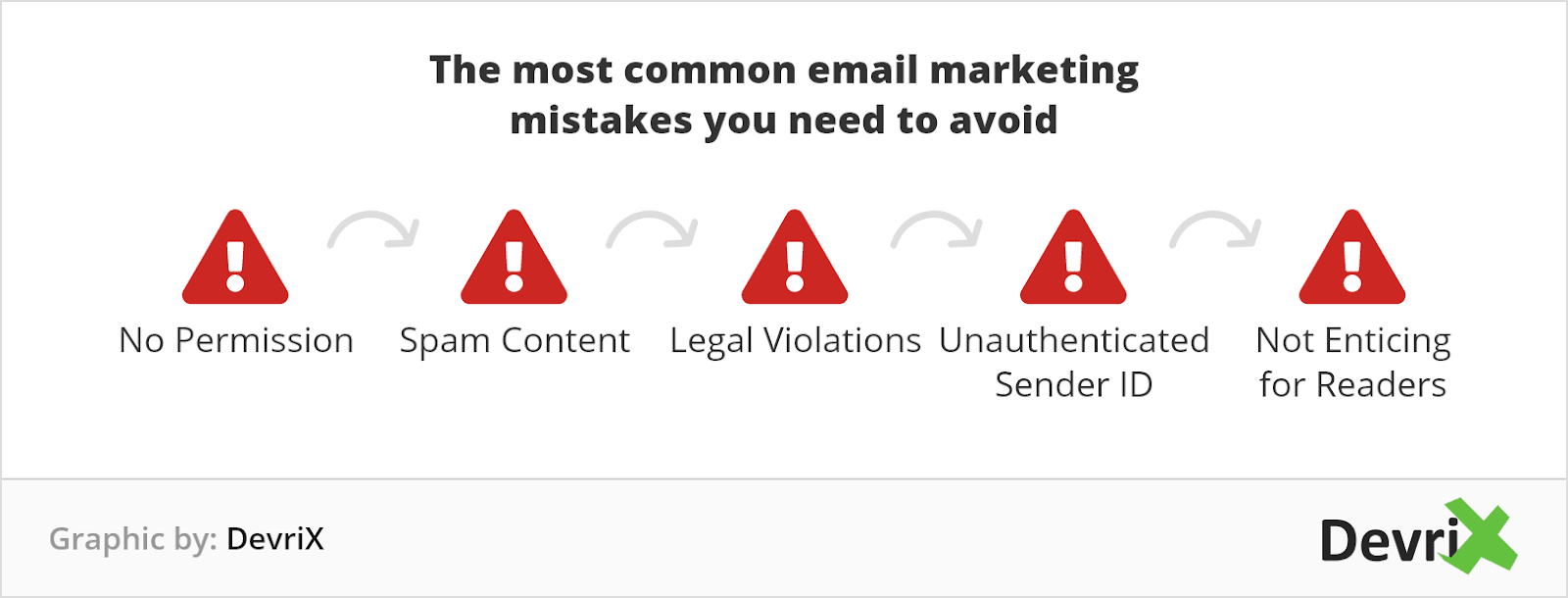
- No Permission – If you want to enter someone’s house, it’s polite to be invited first. Same goes for email. Recipients first must agree to your messages. If you send them unsolicited email messages, you’ll be marked as spam immediately. Use an opt-in form on your webpage to ensure that people will voluntary subscribe to your email list.
- Spam Content – When sending content to your subscribers, don’t do the following mistakes like hashbusting, bad linking, misleading subject lines, sloppy HTML code or too much imagery. Also, don’t overuse CAPS LOCK, because in general, people don’t want to be shouted at.
- Legal Violations – ISPs will filter out every email that violates the CAN-SPAM act of 2003. To avoid any sort of violation, make your “unsubscribe” button visible in your email message, and make the unsubscription easy for readers. Make sure that your subject lines are relevant and your physical address is correct as well. Also, with the new general data protection regulation (GDPR), as an email marketer, you need to collect freely given, specific, informed and unambiguous consent.
- Unauthenticated Sender ID – ISPs authenticate sender identities exist to make sure that the emails come from a legitimate source. Sending email from a not properly configured server will result in a red flag.
- Not Enticing for Readers – Every message has to prove its own value and context. This means that you shouldn’t send messages to people that are not interested. You also shouldn’t send emails four to five times per week, especially if you said that your newsletter is an “occasional” one.
The Formula
Now that you’re prepared for email marketing success, let’s discuss the exact ingredients that can convert your readers into customers.
Define Email Marketing Goals

Proficient marketing campaigns start with setting relevant goals, and email marketing is no exception. When you think about conducting an email campaign, you need to define what you want to achieve first. The best goals that you can achieve with your email marketing campaign are:
- Increasing Your Customer Base – By welcoming your subscribers in your email, you inform them about your company and the value that you will provide to them. You also convince people that you want to build a relationship with them, which can increase your number of relevant customers.
- Growing Your Subscribers List – In email marketing, subscribers are the most prized property. To conduct an effective email marketing campaign, you need to build your list and preserve it.
- Improving Click-through – Click-through rate tracks the number of subscribers who click on the links in your email messages. Improving your click-through rate can help you build relationships with readers, subscribers, longtime customers, and help you create more opportunities to sell them your product/service.
- Increasing Interaction with Your Audience – By promoting your content in your email messages, you have the power to make the users click on your link, share your content and continue to explore your website.
Related: 12 Ways to Increase Conversion Through Email Marketing
The Types of Emails to Use
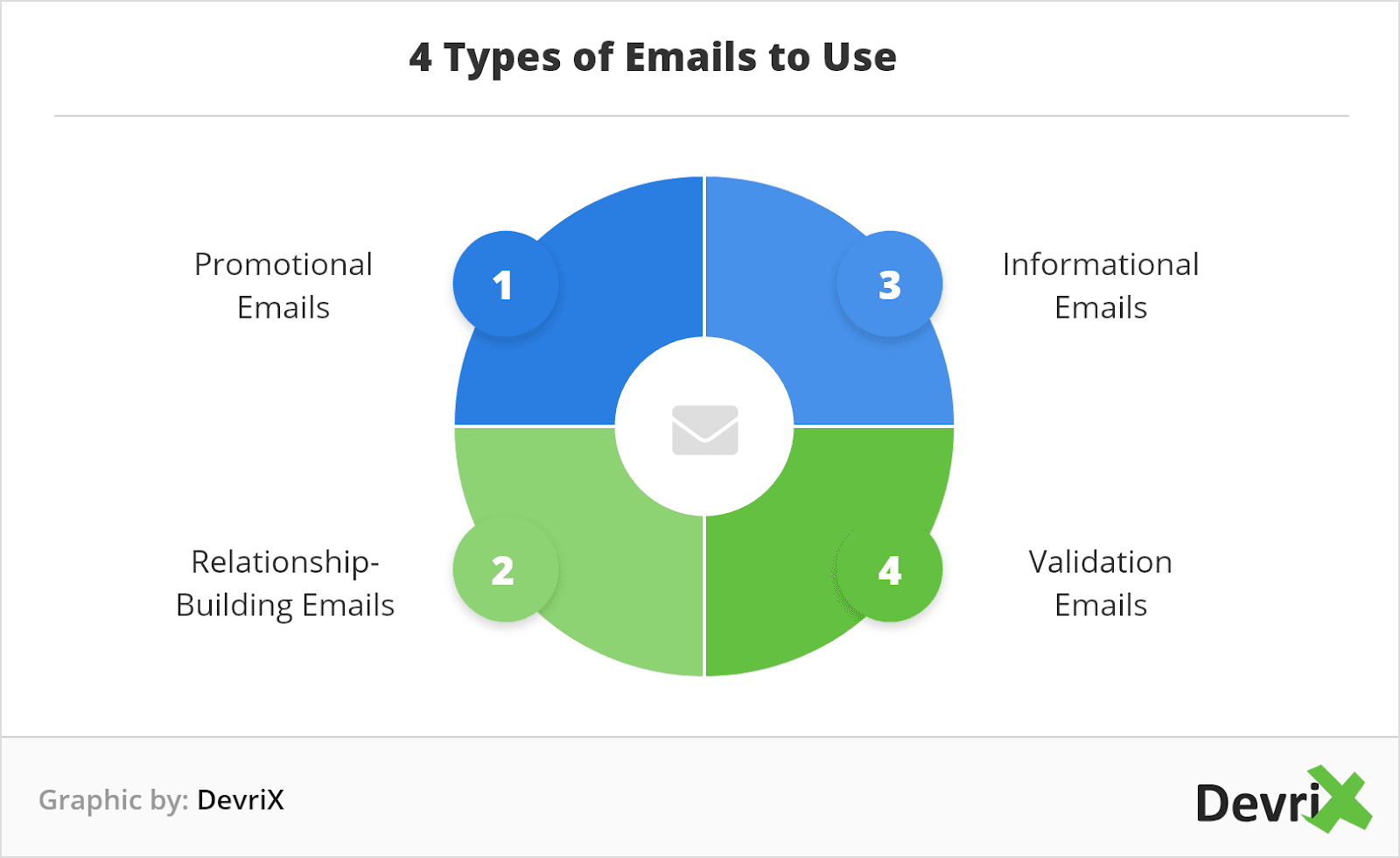
It is important to comprehend that there are various email messages that you can send to your audience. You can segment your audience in different ways but, the most important types of marketing email messages are:
- Promotional Emails – By sending promotional emails, you can develop a discussion with your customers about your products or services.
- Relationship-Building Emails – These email messages are all about relevant content, answering customers questions, newsletters, giveaways, event invitation etc.
- Informational Emails – Informational emails are emails you can send to folks to bring them up to speed in regards to your latest content, product announcements, and more. Note: You should only send them to people who have opted in to receive emails from you.
- Validation Emails – It can be discouraging for your customers if they reserved a product or a service through your website and you don’t send them a confirmation that their order has been placed. Nobody wants to guess if a payment has been processed or not. People want confirmation, and you must deliver that straight to their inbox.
Know the Audience

One action that will ensure that you send emails only to relevant readers is finding your target audience.
A target audience is outlined as a group of people at which an email marketing campaign is directed at. These are the people that are most likely to be converted into customers with each email that is sent. It is vital that your emails satisfy the needs and interests of each of your subscribers.
You must have a segmented list of human beings that are glad to receive your email messages. Segmenting your audience doesn’t have to be problematic.
You can begin with your webpage opt-in form. You can start categorizing your audience based on the data fields of your opt-in form.
The other way to separate your target audience from the rest of your subscribers is by demographics. We are talking about age, gender, and place of living. Again, you can collect this data in your sign-up form, but be careful to not put off potential customers by asking too much of their personal data.
To learn more about your target audience, read our Complete Guide to Finding Your Target Market.
Excellent Sign-up Opt-in Forms
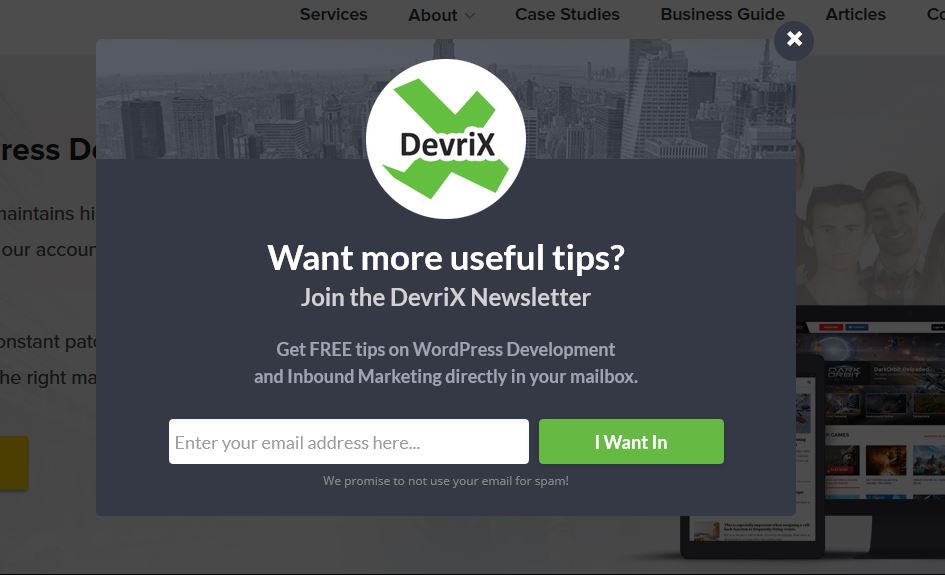
To bring people into your email list, you have to create enticing sign-up opt-in forms. You can test different types of opt-in forms such as:
- Welcome Opt-ins – They are revealed when a person first enters the website.
- Lightbox Popups – You can create pop-ups that can be shown on any page that briefly blur the rest of the content until a prospect decides whether to leave his/her email or exit the opt-in form.
- Exit Intent Pop-ups – They can be shown when the users want to leave your website. When a prospect leaves, it’s the best time to offer something of value like an e-book or another free valuable resource in exchange for the person’s email.
If you use pop-ups and sign-up forms, you can enhance the user experience on your webpage and that will help you bring in more revenue, sign-ups, and engagement for your business.
Your pop-up should make the sign-up process effortless for your web visitors. When you create your sign-up forms, be conscious of the overall experience that you offer your target audience.
- Too Many Unnecessary Fields – Don’t burden your web visitors with too many input fields in the opt-in form. Include the fields that are most relevant to your email marketing goals and leave out the rest.
- Be Concise and Relevant – Everyone will want to know what they are signing up for. Include a short message stating the purpose of the opt-in form and the frequency of email messages.
- Optimize for Mobile – You need to be aware of the fact that your audience is constantly on portable devices. That’s why it’s really important that your sign-up form looks good on mobile devices too.
Related: 12 Tips That Can Put Over 10,000 People on Your Email Subscriber List
Enticing Subject Lines

A proper way to begin your email marketing campaign is by crafting an attractive subject line. The subject line plays a vital role in making people open your email messages. Just like a headline in a blog post, the email subject line captures the attention of readers.
The key elements that your email subject line should have are:
- Urgency – If you execute a sense of urgency in a creative way, it can force the users to click on your email message.

- Interest – Your subject line needs to spark interest in the readers so that they want to learn more and therefore click on your email.

- A proposal – Offer people something that is free or affordable in the subject line.

- Personalization – There were never more possibilities to personalize an email than today. Direct your subject line towards the email recipient.

- Appropriate and Prompt – If you’ve written about trending topics in your industry, including them in your email subject line will help people who are interested in the topic to open them.

Keep it Concise

Users spend a lot of time on their mobile devices so, if your subject line is too long, it will be cut short on their smartphone screens. With more email opens being made on mobile, you shouldn’t use subject lines that are more than 50-60 characters long. People need to scan the subject line, and it’s not recommended to include your whole story in it.
Don’t Make False Promises

Just like the blog post headline, the email subject line is an assurance to readers. So, make sure that you don’t make people open emails by making a false promise in the subject line. You want your audience to trust you, not to unsubscribe from your list.
Make It Action Oriented

Your subject line is your CTA towards opening the email. An actionable subject line is a lot more convincing and attractive to readers, and your email messages will be more clickable as a result.
Be Exclusive

To make people feel special when receiving an email message, show them that they’re an integral part of your community. People want to feel like they belong to an exclusive group when receiving your email. This builds loyalty and will make them want to read more of your messages.
Utilize Numbers

Just like in blog post titles, a relevant number in your subject line can be an effective way to make people open the email. You can use numbers to promote your listicle article, the offer that you’re sending, a discount, or an exact number of important resources.
Ask a Question

Asking a question that is relevant to your target users can make them open your message. It’s a brilliant way to pique the reader’s interest.
Expert Copywriting

If you’re prepared to send an email to your target audience, it’s time to develop the message that you’ll be delivering to their inboxes.
To achieve the best conversion with your email messages, keep them short and to the point. Also, stay away from promoting your products too early. People need to feel relaxed, unpressured, when reading your first email, you can always pitch your offers in your later emails.
Don’t forget to personalize your email message. A personalized email will be more profitable for your business than a generic copy-pasted email message. Other tips to remember when crafting your email copy are:
- Tell a Story – It’s never wrong to form an emotional bond with your subscribers. Some of the most successful email marketing messages use storytelling to convince people to click.
- Offer Something Valuable – It can be any resource or information that is valuable to your readers.
CTA
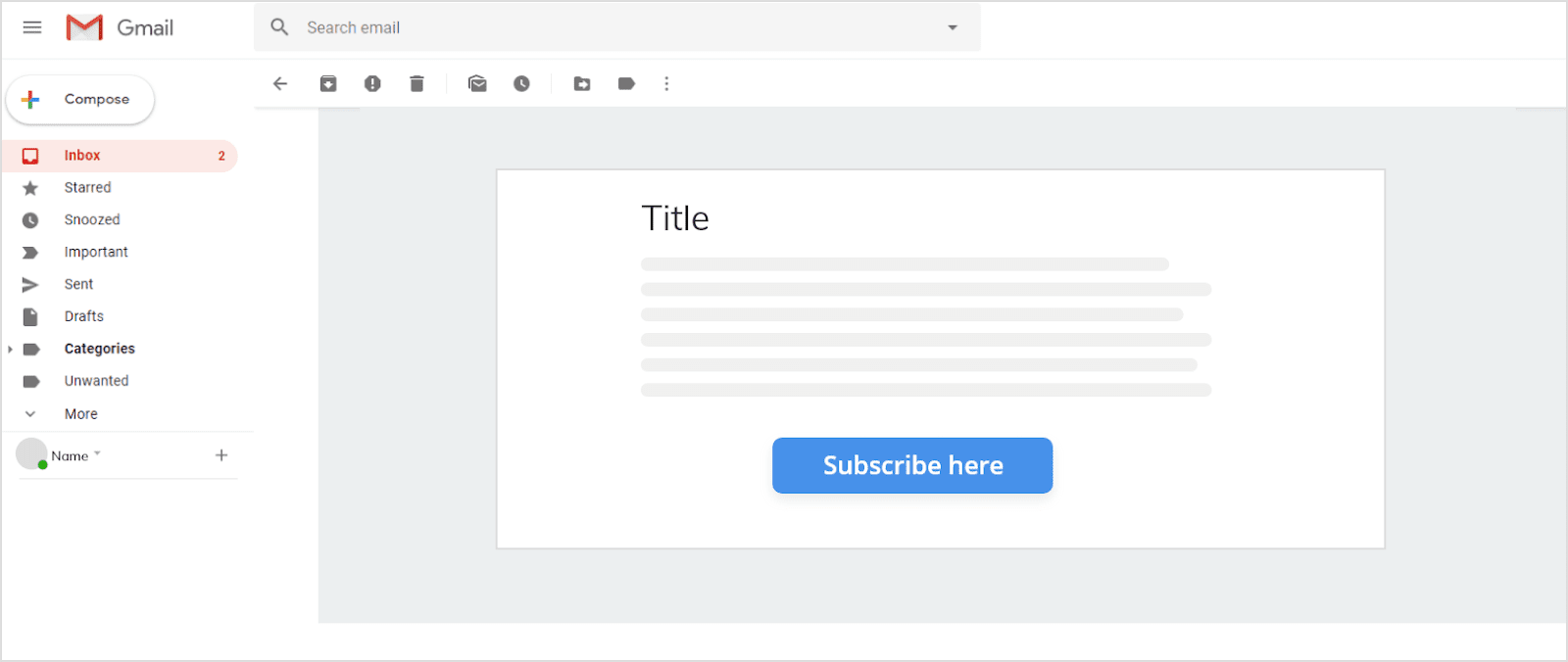
If your subject line needs to be appealing, your call-to-action in your email message has to be even catchier than your subject line. The CTA is the entire basis of forming and sending an email to subscribers. It has to be noticeable in your message. A good way to do that is to bold a line of copy or have a colored action button.
In a nutshell, make the call-to-action clear to your subscribers. Make sure that they spot it and let them decide whether to take action or not.
Beautiful Design

Source: https://mailchimp.com/
Email design is important, not just for the copy flow, but for the success of your entire email marketing campaign. Bad looking emails can ruin your reputation as a brand and as a result, people will stop reading or unsubscribe from your email list.
Also, with the increased use of mobile devices, it is really important to design your message to be responsive to smartphones and tablet screens. The copy should automatically change to its most optimal size when opened on mobile.
Make the design clean and straightforward. Use the proper amount of blank space to let users scan the email. Don’t overuse images, a lot of email readers disable them to ensure better experience on their devices.
Always design your email messages as a continuation of your brand online. The email message should blend in perfectly with your webpage design, logo, and social media designs in order to be identifiable to the readers.
Automate

Email marketing takes time and commitment. As a company, you are most likely busy with other business development and marketing tasks. For that reason, email automation can be one of your most valuable allies when it comes to converting customers.
Email marketing automation understands the preparation and scheduling of emails that the user will automatically receive if he/she performs the desired action. For example, when someone subscribes to your newsletter, you can send a welcome message immediately. This makes the reader feel appreciated from the start.
For the most efficient email automation process, you’ll need to develop a sequence of emails that will move the users through your sales funnel. If you don’t use software that can automate your email messages, you can’t nurture your prospects efficiently.
Sending Emails for Different Stages
If you want to properly nurture your email subscribers, you need to send different messages for each stage of the customer’s journey.
Imagine if you’ve created a WordPress email mentorship course.
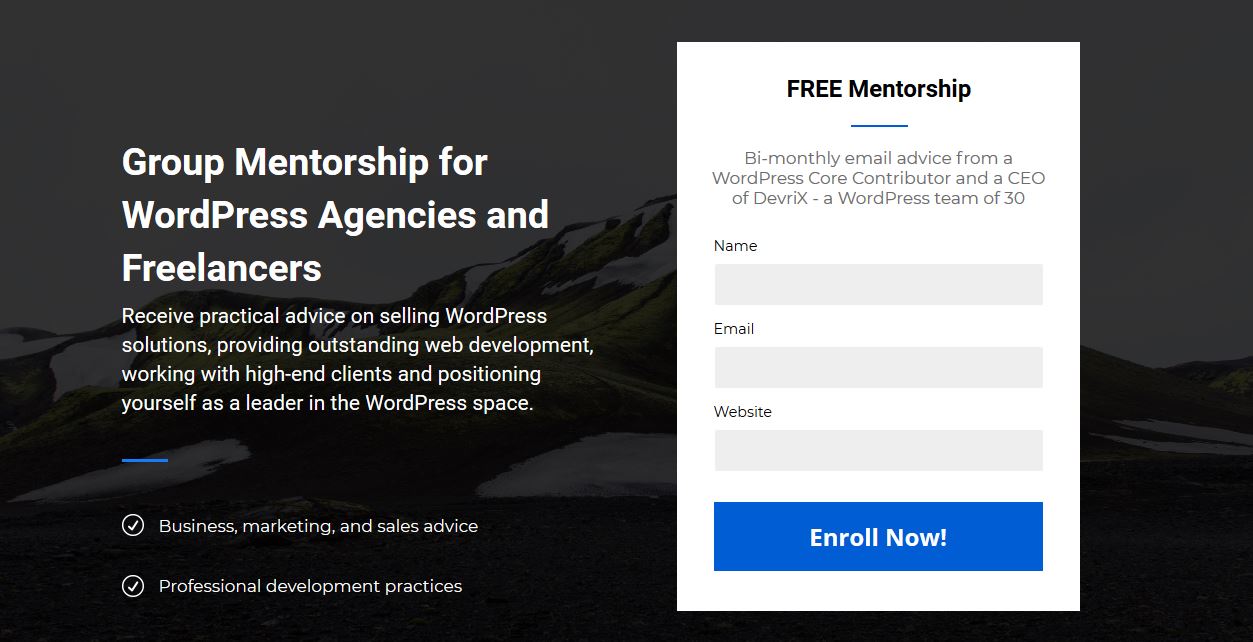
If you use an automated workflow, you’ll notice that after the first sending, some of the readers will have opened the email, clicked the links and replied to the message.
The subscribers that are engaged and want to learn more are the ones that you should focus your nurturing sequence on. They are curious about your offer and they are predisposed to pay attention to your next emails too.
Besides sending different lead nurturing emails, you can also automate different email responses that are triggered if the readers replied with their own email message. If the subscribers completed every desired action and received every email that you’ve sent, you can also automate a ‘Thank you’ email message.
Measuring
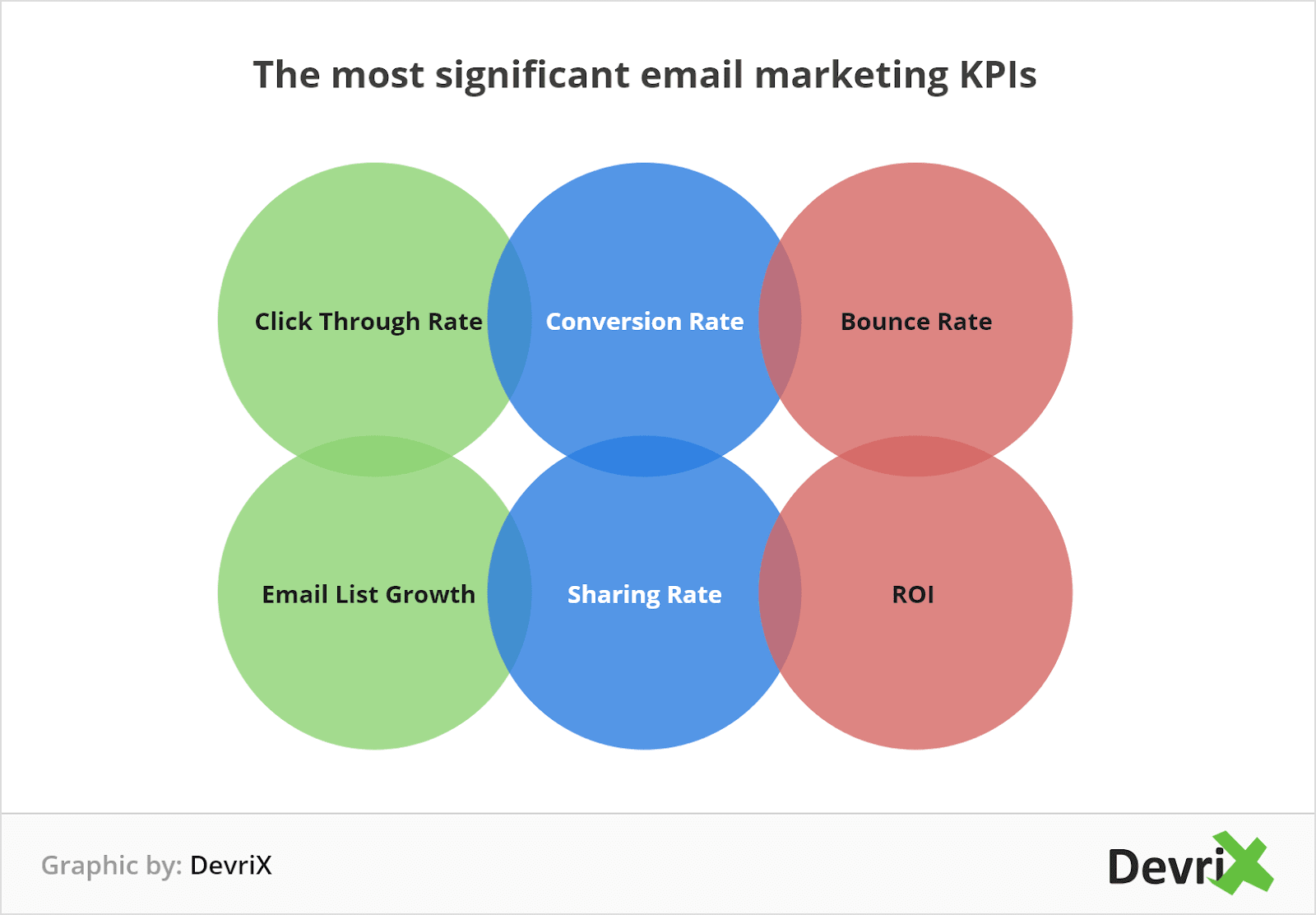
To know whether your email marketing works or not, you have to measure key metrics. The metrics that you’ll quantify depend on your email marketing goals. The most significant email marketing KPIs are:
- Click Through Rate – The ratio of people that have clicked on your links to the number of people that have opened the email.
[number of users that clicked % number of email opens] x 100
- Conversion Rate – A conversion rate is every time an email reader makes the desired action after he/she clicked on your link.
(number of people who made the desired action) % (number of opened emails)
- Bounce Rate – If an email cannot be delivered, email bounce happens.
1 – [(number of delivered emails) % (number of sent emails)]
- Email List Growth – To see if your email marketing campaign is a successful one, you need to keep track of your email list growth rate.
([(number of new subscribers) – (number of unsubscribers + spam complaints)] % Total number of email addresses on your list]) x 100
- Sharing Rate – The percentage of people that shared with their friends or forwarded the email.
(number of people that shared/forwarded message) % (number of opens)
- ROI – Your total revenue divided by your spending.
[[(money made in additional sales) – (money that is invested in email marketing)] % (money spent on the email campaign)] X 100
Wrapping Up
Now you’re set to start with your email marketing campaign. With the exact formula in your hands, it’s time to make some serious profit from email messaging. By following the tips above, you’ll ensure new leads and customers with every new email campaign.
Remember to always start by building a relevant email list. You’ll need to nurture that list and develop readers that are genuinely interested in your products/services. Monitor the most applicable KPIs to see how your email marketing performs with your target audience.
If you’ve read and understood everything so far, then you are equipped with the understructure that can help you develop an extraordinary email marketing. Have a successful campaign!
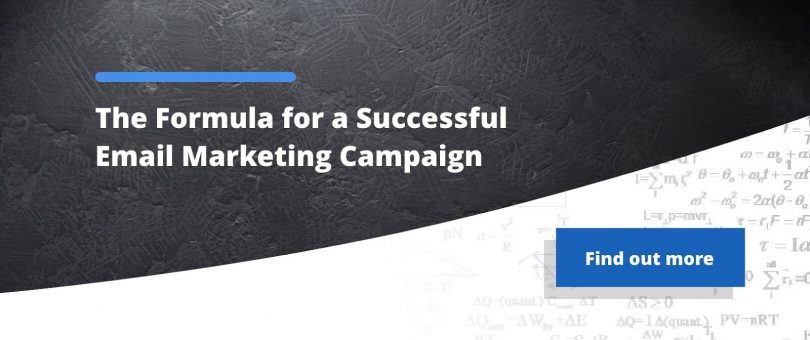
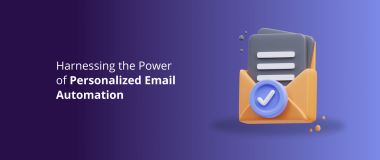
![[Infographic] 24 Fundamental Email Marketing Stats](https://devrix.com/wp-content/uploads/2018/01/Infographic-24-Fundamental-Email-Marketing-Stats-380x160.png)
